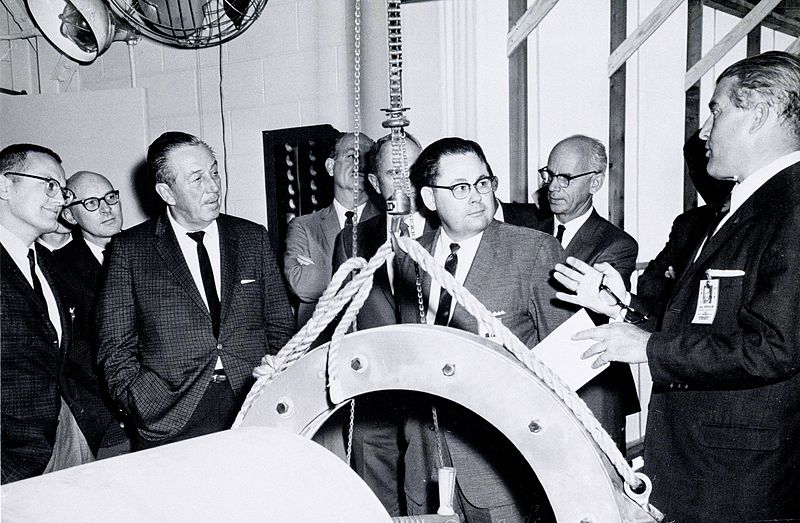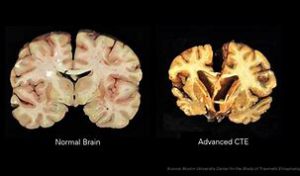Families throughout the United States faced hard times during the late-1930s. People were still recovering from the effects of the Great Depression, unfulfilled promises from President Roosevelt’s New Deal, and unemployment.1 During these financially troubled times, two dreamers, brothers Roy and Walt Disney, were on a mission to continue to produce quality animation on a fixed budget. After Fantasia‘s disappointing initial grossing, Disney Animation Studios’ debt was edging toward $3 million, which led to Walt Disney cutting all of his animators’ salaries. Although Roy Disney believed that this would undermine everything the two had built, he realized the only alternative was to sell their films through a franchise or file for bankruptcy, and so he agreed to the arrangement, unaware of the wrath that would follow.2

Tensions rose as animators also noticed a change in Walt Disney’s attitude toward them. The once cheerful man who was full of magic soon lost that touch, becoming distant to the people around him. Walt began to take all the credit for the animations that were being produced, and his employees soon realized that their pay was much lower than Disney’s salary. His ‘in-betweeners’ and clean up men were making $20 at the most, while his animators, ranging from amateurs to professionals, made between $75 and $300 weekly. Walt brought home a salary five times what his highest paid animators were bringing home.3
These pay disparities led his beloved animators to walk out on the company. On May 28, 1941, employees were greeted by hundreds of their coworkers waving signs preventing them from entering the studio. Although the exact number of employees who went on strike differs between sources, it is estimated that roughly one-third of the 1200 employees went out that morning. For the first few days of the strike, employees exchanged jokes and banter. The animators held up picket signs with clever illustrations that depicted their true emotions. One that struck deep to the studio was a picture of Walt Disney’s face in a cartoon style with crossed eyes and the caption “I can’t see why they’re unhappy.”4 Walt refused to give in to the demands of his employees, because he did not feel that they needed the increase in pay. This firm stance left the strike to go on for five whole weeks, tearing apart the company’s unity. This tension led Walt to leave for South America to take some time away from work, while he let go almost half of his team. After a bank representative for the company stepped in to review the case, the studio was sustained in favor of the animators leading to the dispute being settled. Though a treacherous three and a half months had passed, work finally resumed at the studio in Burbank, California with 694 employees on September 16, 1941.5

Just as everything seemed to be falling into place, the unimaginable happened. On December 7, 1941, the Japanese Navy Air service struck down on the United States naval base in Pearl Harbor sending the United States into World War II. Panic set in for the animators again as the cost of the films being produced during this time put a damper on the company’s overall budget.6 During this time, Walt and his company were sought out to produce cartoons for the armed services as morale builders. They also used half of the animation studio to house antiaircraft troops that were fighting during World War II. Although the company seemed to be taking on too much, this engagement would inspire Walt to create a few propaganda short films and war posters of his own that would speak to the people of the United States. Of all of the animation produced during the war, the most notable piece was Der Fuehrer’s Face, an animated short film in which Donald Duck dreams he is working in a German factory, all while ridiculing Adolf Hitler. The combination of housing troops in the studio, producing short films that expressed the idea of America’s freedom, and the efforts to inspire those fighting for the United States broaden the brand as a whole, showing every single American know what the Disney company stood for at the time.7
Though Walt himself did not find very creative success regarding his work toward the government propaganda animation and posters, it paid off very well for the company, raising its reputation and generating profits. The animation studio’s contributions to America during the World War II brought smiles with their comedic satire to families struggling to find hope as their loved were out serving their country. Soon after, they produced notable works such as Bambi (1942), Song of the South (1946), and Cinderella (1950), with Cinderella generating enough gross profit to pull the company out of debt and further establish their brand. Had both the strike and Walt lending a hand during the war not happened to the Walt Disney Animation Studios, Walt and Roy Disney may not have been able to sufficiently pay their ‘on the edge of leaving the company’ employers and the bills that came with owning the animation studio. The studio itself could have shut down permanently, never transforming from two passionate brothers’ project to a multi-billion dollar brand that brings magic fans and families all across the globe.
- The Hutchinson Unabridged Encyclopedia with Atlas and Weather Guide, 2018, s.v. “The USA in the 1930s.” ↵
- Neal Gabler, Walt Disney: The Triumph of the American Imagination (New York: Knopf, 2006), 350-351. ↵
- Neal Gabler, Walt Disney: The Triumph of the American Imagination (New York: Knopf, 2006), 355. ↵
- Steven Watts, The Magic Kingdom: Walt Disney and the American Way of Life (Boston: Houghton Mifflin, 1997), 209 ↵
- Neal Gabler, Walt Disney: The Triumph of the American Imagination (New York: Knopf, 2006), 367-371 ↵
- Barry Keith Grant, “Walt Disney Company,” Schirmer Encyclopedia of Film, Vol. 4, (New York: Schirmer Reference, 2007), 331-336. ↵
- Paul Lagasse, “Walt Disney,” The Columbia Encyclopedia, 8th ed. (Columbia: Columbia University Press, 2018) ↵



94 comments
Jennifer Salas
I didn’t know that the war had a major impact on Disney. I found it fascinating how Disney produced cartoons for WWII to help American families during this difficult time in history. It sad that Walt Disney took advantage of his workers and would lie to them, and I think the war had a major factor in this. Luckily, the animators stood up for themselves and protested against this.
Rylie Kieny
This is a story that shows even the best well known businesses face hard times. It also shows how outside sources effect a business and the effects a business can have on society. The idea of CEOs unfairly paying their employees is no new topic and one that is still even brought up now. No business is perfect as they are run by imperfect humans. I had not heard about the strike but I am glad the animators stuck up for themselves and for what they believed to be right. I am also glad the company turned something good out of a bad situation. They helped boost moral during a time when the country was really lacking it.
Christopher Vasquez
This is an inspiring story! It reveals the hard times that the Disney studio went through, as well as the opinions of his workers on strike. In the end, it seems like the strike worked itself out. The way that Walt Disney was able to help his troops out was amazing. Not only was he able to house some units in his factories, but he was also able to inspire his fellow Americans with his cartoons. His creativeness knew no bounds, and he was able to help inspire America with it!
Mariah Garcia
Walt Disney like other CEO’s have fallen into treating their employees unfairly due to budget cuts or other issues. But, I do believe Walt Disney had his issues during the crisis but everything seemed to settle after the bank representatives favor of the animators. What I didn’t know was that during WWII the company was sought out to produce cartoons for the armed services as morale builders. Also that they used half of the animation studio to house antiaircraft troops that were fighting during WWII. I do think that helped many Americans find hope and humor in such a tragic time.
Montserrat Moreno Ramirez
It’s not common to hear about the bad part of Disney. Every time someone mentions this great company, we all imagine good and positive things about it. Who could have imagined that Disney, which is now a multibillionaire company, once struggled with such big debt that was not even able to pay their animators what they deserved? but moreover, that the great Walt Disney didn’t seemed to understand why their employees weren’t happy? Good article!
Tyanne Pearcy
Growing up I always thought of Disney as a being that could do no wrong, this article really expands on the reality behind the fantasy. The most shocking part of the article is when the author talks about how the animators weren’t getting paid the way that they should be. This seems to always be an issue with companies and businesses. Even though Disney obviously wasn’t perfect, the company still brought joy to peoples hearts.
Jasmine Rocha
We always see Disney as the light and hope for some of us and during this time Disney was able to bring hope for those outside of Disney with their creations. Inside Disney was a different story, Walt was very unfair towards his animators. He would underpay them while Disney was also going through some financial struggles. This article was really good because it gave us the insight into what the company and those inside the companies were going through while also showing a part of who Walt Disney was.
Daniel Linstead
Walt Disney was a very clever man. He created something that is a part of every kids childhood but even into their adulthood. It is strange to hear about someone that brought so much joy to peoples lives can have such a sour side. The fact that he was such a selfish person is just disappointing you would think he would be a very humble person. Good informative article
Bictor Martinez
You do not get hear about this side Walt Disney very often. It was not right for his to be earning 5 times the amount his highest paid animators were getting and taking credit for all the animations that they were making. Walt went through a very difficult start to his cartoon animation career where he could of easily stopped because of all the hate he was getting, however he did not. He was able to bring lots of smiles through the very hard times the US was going through at the time that would make one of the best animators of all time.
Devin Ramos
As a business major, I found this article very interesting. I knew that during world war two Walt Disney made propaganda such as the ” Der Fuehrers Face” which I have seen. During this time helping with the war effort wasn’t just a business thing to do it was a moral thing to help with. I did not know that the Disney warehouse held soldiers for some time.